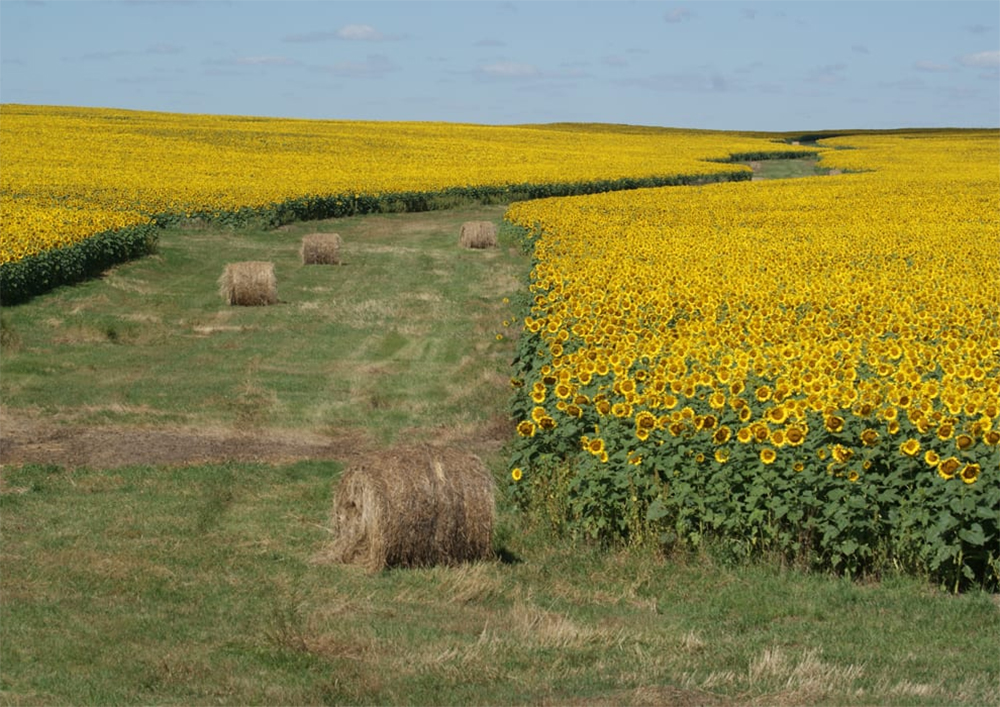Red-winged blackbirds, with their red and yellow shoulder badges, are a handsome-looking bird.
Manitoba farmers who grow sunflowers probably have a different opinion.
That’s because a large flock of blackbirds can cause significant yield losses and in certain cases, ravage all sunflowers in part of a field.
The United States National Sunflower Association has estimated that blackbirds cause, on average, yield losses of 2.6 percent in oilseed sunflowers. Growers in the prairie pothole region of North Dakota, where blackbirds are common, likely suffer yield losses of five percent, seven percent or higher.
Read Also

Farming Smarter receives financial boost from Alberta government for potato research
Farming Smarter near Lethbridge got a boost to its research equipment, thanks to the Alberta government’s increase in funding for research associations.
Farmers have used bangers and other techniques to deter the birds, with little success.
“Even with corn, researchers have tried different things to keep them out of their trials. There are bangers and scarecrows,” said Morgan Cott, agronomy extension specialist for sunflowers, corn and flax with the Manitoba Crop Alliance.
“The problem with the birds is they just get used to it.”
Scientists with North Dakota State University have been studying a solution that’s more technical than a scarecrow. They’ve experimented with unmanned aircraft systems, more commonly known as drones.
A number of sunflower growers already use drones to ward off blackbirds.
The best time is first thing in the morning, when the birds are arriving in the fields. As well, growers should harass the birds early in the fall, before feeding on sunflowers becomes a habit.
In 2019 and 2020, NDSU graduate student Mallory Smith had drones fly over North Dakota sunflower fields in September and October.
She conducted 35 trials across the state in 2019 and 60 trials in 2020.
The drones in the experiment did scare the blackbirds, but not for long.
“The majority of the flock would flush when the UAS approached. But, we also discovered that once the UAS left, the birds returned,” Smith said, as reported by the National Sunflower Association. “Even if we could get birds to leave during 10 minutes of hazing, a large majority returned to that field within 15 minutes. We know we need to add something besides hazing to keep the birds out. That’s the direction our study will take this fall.”
The new direction is using drones to apply a bird repellent called methyl anthranilate.
The chemical is a plant-based compound that’s been used as a flavour additive for foods and beverages, and as an aromatic in perfumery, says birdbuffer.com.
Methyl anthranilate provides flavour for grape Kool-Aid and some U.S. airports have used it to ward off birds.
Smith plans to apply the compound, using drones, in September and October.
“We will evaluate how that repellent works in real-time while it’s being actively deployed on areas of the sunflower field where birds are foraging.”
The research is positive news for Manitoba sunflower growers, who need better solutions for blackbirds.
“It (damage) varies from year to year… but it’s always something that they’re concerned about,” Cott said. “We’ve never done that (blackbird research)…. So, it’s pretty cool that they (NDSU) have some grad students doing it.”


















